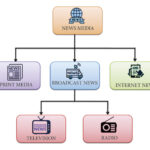
Introduction
Cybersecurity is a critical aspect of modern technology, ensuring the protection of digital assets, sensitive information, and personal data from cyber threats. As cyberattacks become more sophisticated, businesses and individuals must adopt strong security measures to mitigate risks. This guide explores the importance of cybersecurity, key components, best practices, and future trends shaping the cybersecurity landscape.
Importance of Cybersecurity
Protects Sensitive Data: Prevents unauthorized access to personal and business information.
Prevents Cyber Threats: Shields systems from malware, ransomware, phishing, and hacking.
Ensures Business Continuity: Avoids operational disruptions caused by security breaches.
Maintains Trust: Enhances credibility and customer confidence in businesses.
Compliance with Regulations: Meets legal and industry-specific security requirements (e.g., GDPR, HIPAA, ISO 27001).
Key Components of Cybersecurity
1. Network Security
Firewalls: Block unauthorized access to private networks.
Intrusion Detection Systems (IDS): Monitor and detect suspicious activities.
Virtual Private Networks (VPNs): Encrypt internet connections for secure browsing.
2. Endpoint Security
Antivirus Software: Detects and removes malware from devices.
Patch Management: Regular updates to fix security vulnerabilities.
Beyond passwords, Multi-Factor Authentication (MFA) adds additional security layers.
3. Cloud Security
Data Encryption: Protects stored and transmitted data.
User access to cloud resources is managed by Identity and Access Management, or IAM.
Zero Trust Security Model: Assumes no device or user is inherently trustworthy.
4. Application Security
Secure Coding Practices: Reduces software vulnerabilities.
Penetration Testing: Identifies weaknesses before cybercriminals exploit them.
Web Application Firewalls (WAFs): Protects against web-based attacks like SQL injection and XSS.
5. Cybersecurity Awareness & Training
Phishing Simulations: Educates employees on identifying malicious emails.
Security Policies: Defines protocols for handling sensitive information.
Incident Response Plans: Prepares organizations for potential security breaches.
Best Practices for Cybersecurity
Use Strong Passwords: Implement complex, unique passwords for different accounts.
Enable Two-Factor Authentication (2FA): Adds an extra layer of security.
Regular Software Updates: Keeps systems protected against vulnerabilities.
Backup Important Data: Ensures recovery in case of cyber incidents.
Monitor Network Activity: Detects and mitigates suspicious behavior.
Be Cautious of Phishing Attacks: Avoid clicking on suspicious links or attachments.
Restrict Access to Sensitive Information: Apply role-based access control (RBAC).
Future Trends in Cybersecurity
Artificial Intelligence (AI) in Cybersecurity: Enhances threat detection and response.
Zero Trust Architecture: Implements strict access controls for improved security.
Biometric Authentication: Uses fingerprints, facial recognition, and retina scans.
Cybersecurity Automation: Reduces manual effort in monitoring and responding to threats.
Blockchain for Security: Enhances transparency and data integrity.
Conclusion
Cybersecurity is essential for protecting digital assets and ensuring online safety. By implementing best practices, staying informed about emerging threats, and adopting advanced security measures, businesses and individuals can safeguard their digital presence. As cyber threats evolve, staying proactive and vigilant is key to maintaining a secure digital environment.











